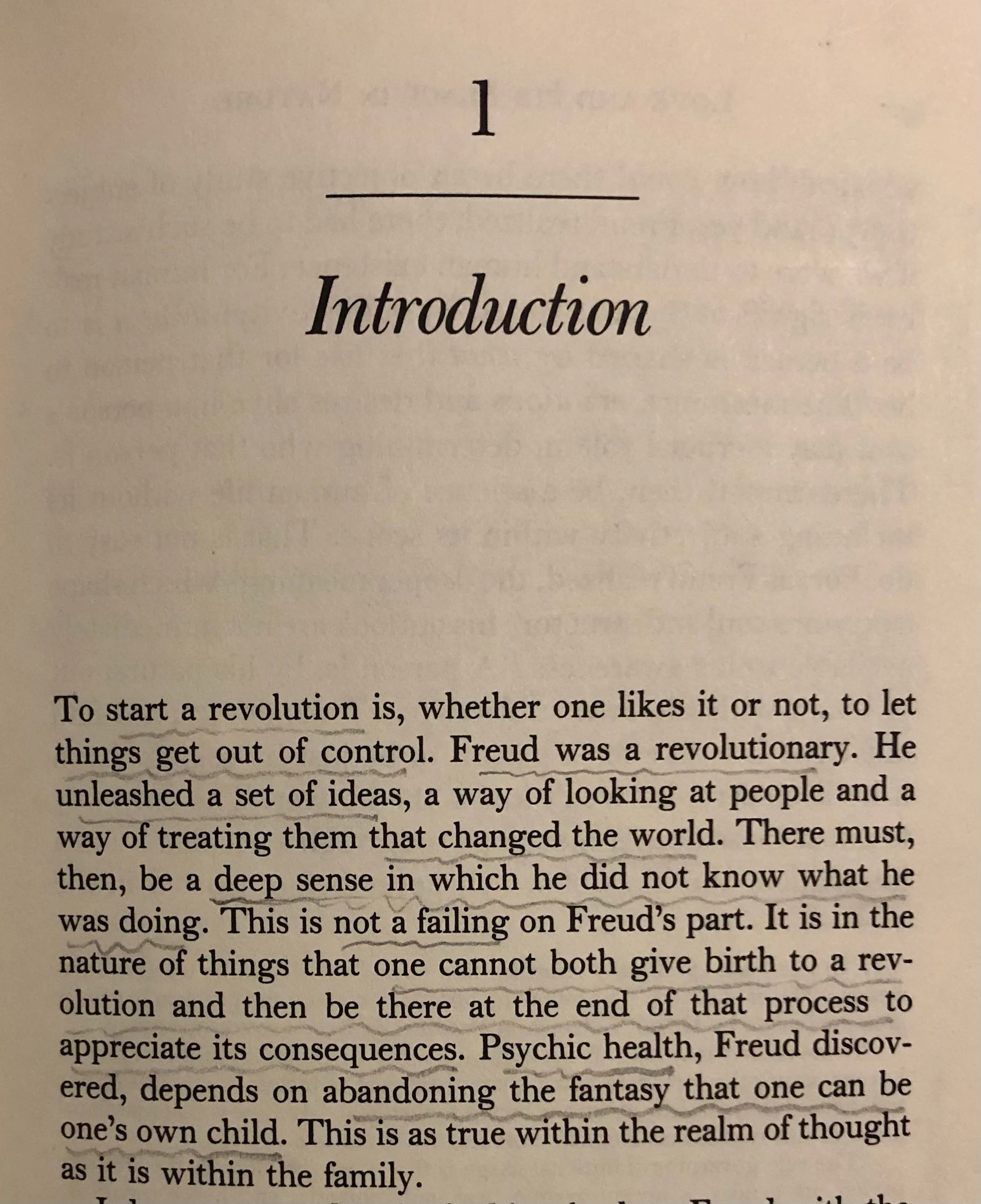Jonathan Lear, Love and its Place in Nature (1990). Chapter 1 (II)
We have been rehearsing the elements of that “revolution” which Lear credits to Freud — particularly those elements designated by the expressions “a science of subjectivity” and “archaic mental functioning.” At the end of the last entry, we raised the question of criteria: on what basis does psychoanalysis interpret neurotic “symptoms” — hysterical somatization, say, or obsessional rituals — as manifestations of mind, however “unconscious?” The answer, we suggested, will provide a “criterion” at once epistemological and clinical. On the one hand, it will entitle us to identify the presence of mentality — intentions, motivations, wishes — in ostensibly non-mental phenomena. On the other hand, it will isolate the mechanism of psychological growth. What is this criterion?
Before addressing Freud’s innovation, let us consider a more conventional position. (Here I deviate from Lear’s own way of framing his account. But it seems he must have something like the following in mind.) Under normal circumstances, our criterion for the mind’s self-recognition in bodily movements and utterances seems a straightforward matter. We view a particular episode as “mental” — lifting an arm, say, or calling a friend — if, and only if, it seems consciously to originate in an “act of will,” intention, design, and to reflect them. In these instances I suppose, correctly or not, that the mental, geistige qualities of the occurrences are directly accessible, in the links I identify between conscious initiation and its consequences. Of course, certain plans may fail to materialize, in whole or in part. I may intend to take a particular subway line to work, but I am unable because it is not running that day — or perhaps I mistakenly board the wrong one. But my actions are still intelligible as my actions, as reflecting mentality, since they follow from accessible intentions that, in these scenarios, simply fail. I must then revise my intentions to adapt to a reality that restricts them in some way.
The situation is starkly different, however, in episodes of so-called “archaic mental functioning.” Here no “connections” of the ordinary kind are directly accessible to the mind — connections, that is, between itself and its purported manifestations. The hysteric may introspect, search her heart at length, and yet fail to find any “desire” for — let along a concrete “intention” to induce — the paralysis that has stricken her limb. Measured by the “conventional” criterion, then, the phenomenon in question is assuredly not mental: it precludes “mind’s self-recognition in otherness,” to use a Hegelian phrase.
Yet as we indicated above, psychoanalysis supplies another criterion for identifying the mentality of these occurrences. With the aid of this criterion, we can verify that, appearances notwithstanding, the paralysis in the limb is indeed “permeated” by mind. This is what Lear writes:
“The answer lies in the fact that recognition tends to have a transformative effect…[I]nterpretation not only explicates the primitive mental activity, it can transform it…It is the responsiveness of this archaic mental activity to the mind’s own attempt to understand it that lends credibility to the idea that what we have here is a form of mental functioning.” (7)
To put the claim into more structured, criterial language: mind has successfully recognized itself in a seemingly non-mental process when its “interpretation” alters that process. The process’s responsiveness to a certain type of conceptuality shows that it was never below the threshold of mind, after all. (Lear must have Freud’s “Constructions in Analysis” essay partly in mind here.)
In this way, Freud establishes an ontological continuity between archaic mental functioning and the consciousness that “grasps" it with an effective interpretation. Again, this continuity complicates the methodological paradigm accepted by Freud the “natural scientist.” For on Lear’s account, the analytic interpretation is never a conceptual judgment applied externally by a detached “observer” to an independent, antecedently determinate “object.” On the contrary:
“A more compelling picture is to see the interpretation as growing naturally out of the archaic “thinking” it interprets. A good interpretation represents the end of a developmental process which begins with archaic attempts to “say the same thing.” The interpretation allows the mind to understand, at the level of a conceptualized judgment, what it has been trying to say all along, in more primitive ways” (8)
This “developmental process” implies an organic “teleology” of sorts, according to which mind strains from the first toward a self-expression that is finally redeemed in self-knowledge. In the next entry, I will say more about the kind of psychoanalytic teleology Lear has in mind, and its connection with the overarching theme of the book, namely, the meaning in analysis of love.
